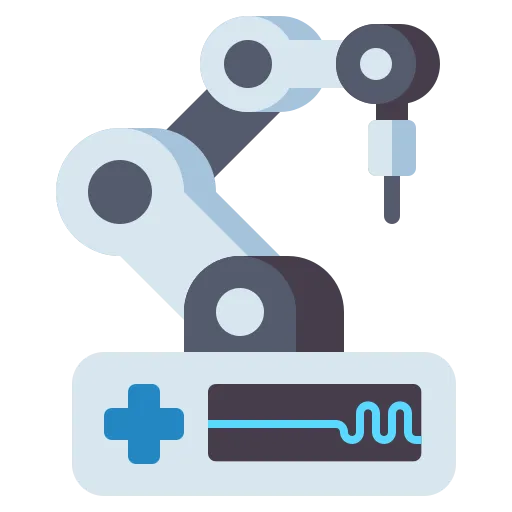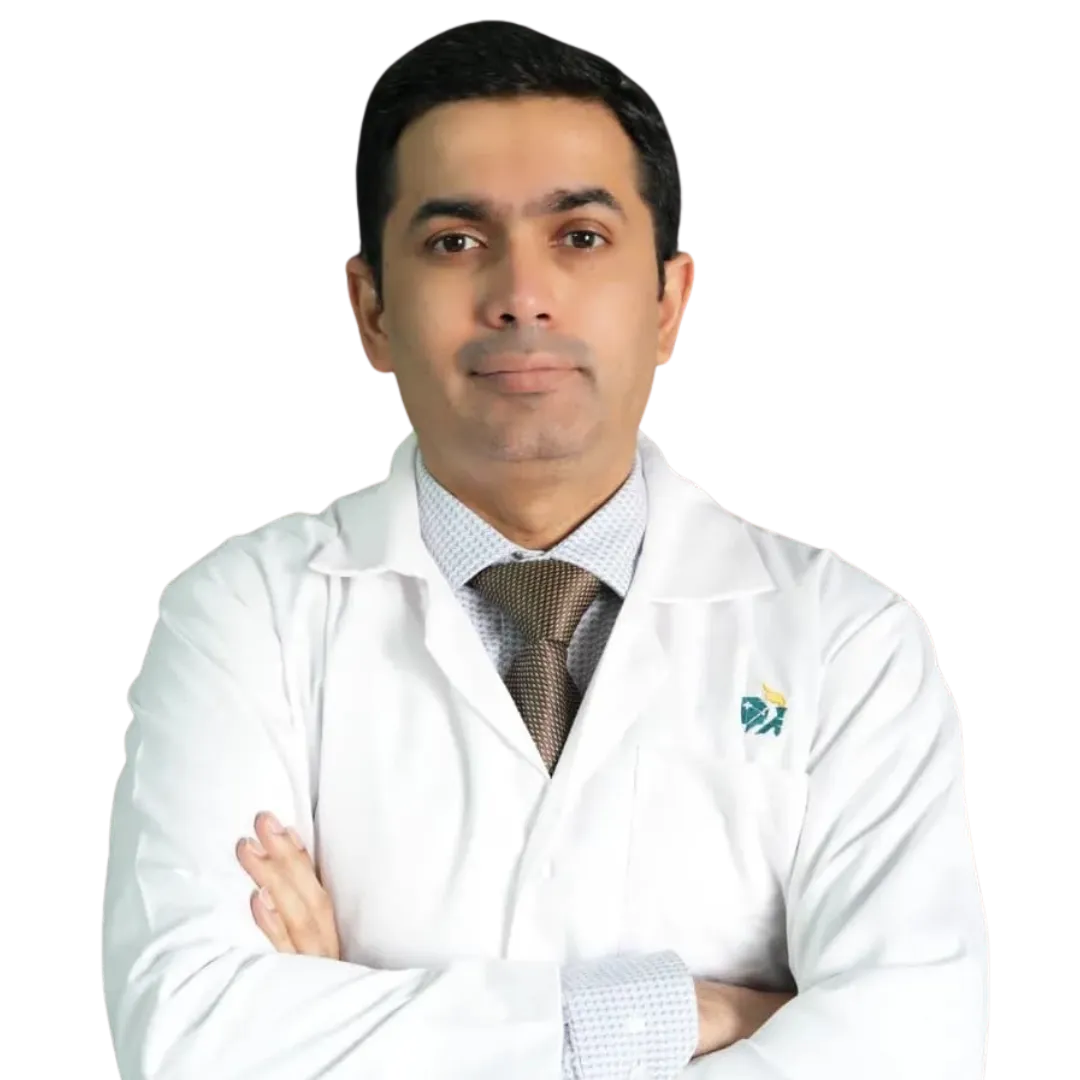Robotic Cancer Surgery
Benefits, Risks & Recovery
It’s important for you to understand how robotic surgery works, its benefits, and any possible risks. With better precision and fewer problems, this new type of surgery is improving cancer treatment and giving patients a much better chance to get well.
Introduction to Robotic Cancer Surgery
Robotic surgery is a modern technique that helps doctors perform complex operations using robotic systems. This method allows for more precise tumor removal while protecting healthy tissues. It is often used in surgeries for prostate, colorectal, gynecologic, and lung cancers, helping patients recover faster and spend less time in the hospital.
Robotic surgery has been around since the late 20th century. The da Vinci Surgical System, approved by the FDA in 2000, played a major role in making this technology popular. Over time, improvements like artificial intelligence (AI) have made robotic cancer surgeries even safer and more accurate. Today, many doctors and patients prefer this method for better outcomes.
Have a Question?
How Does Robotic Surgery Work?
- What Does a Surgical Robot Do?

⦿ Robotic arms that the doctor controls to make exact movements.
⦿ A 3D camera that gives a super clear, close-up view of the inside of the body.
⦿ Better movement to remove tumors more accurately.
- How Does the Surgeon Control the Robot?

⦿ The doctor sits at a computer and moves the robot’s arms.
⦿ The surgery is done through tiny cuts, making it less invasive.
⦿ This method helps reduce tiredness for the doctor, making the surgery more effective.
- How Does Robotic Surgery Compare to Other Types?
- Swipe right to view the full table
| Type of Surgery | Main Features |
|---|---|
| Robotic Surgery | Small cuts, faster healing, less pain |
| Open Surgery | Big cuts, longer hospital stay, more infection risk |
| Laparoscopic Surgery | Small cuts but less flexible than robotic surgery |
Benefits of Robotic Cancer Surgery
- More Accurate and Precise Surgery

3D camera
3D camera gives doctors a super clear, zoomed-in view, so they can see tiny details that might be hard to spot otherwise.

Lower risk of damaging healthy tissue
Lower risk of damaging healthy tissue because robotic arms move very precisely, which helps doctors avoid mistakes.

Better control
- Smaller Cuts, Less Pain, and Fewer Problems

Smaller cuts mean less bleeding

Lower risk of infection and less pain

Shorter hospital stays
- Faster Healing and Better Results

Get back to normal life sooner

Less scarring

Fewer complications after surgery
Have a Question?
Risks and Challenges of Robotic Cancer Surgery

- Possible Risks During Surgery
⦿ Chance of bleeding and infection, just like with any surgery, but robotic surgery tries to lower these risks.
⦿ Possible damage to nearby organs if the robotic arms accidentally touch other parts inside the body, though this is rare with skilled doctors.
⦿ Technical problems with the robot, which could happen in rare cases, possibly requiring the surgeon to switch to traditional surgery.
- Expensive and Not Available Everywhere
⦿ Robotic surgery is costly because the machines are advanced and require a lot of money to buy and maintain.
⦿ Not all hospitals offer it, especially in smaller towns, so patients may need to travel far to get this type of treatment.
⦿ Health insurance may not cover it, meaning some patients might have to pay a lot of money out of pocket.
- Special Training for Surgeons
⦿ Doctors need extra training to learn how to use robotic systems correctly, which can take a long time.
⦿ Some surgeries may take longer at first while doctors are still getting used to the robotic system.
⦿ Success depends on both the technology and the doctor’s skills, meaning experienced surgeons are still needed for the best results.
Which Cancers Can Be Treated with Robotic Surgery?
Prostate Cancer

⦿ Removes the prostate gland with great accuracy, which helps avoid harming nearby healthy tissues.
⦿ Reduces the risk of side effects like trouble controlling the bladder or problems with sexual function.
Women’s Cancers

⦿ Used for the cervix cancer, ovaries cancer, and uterus cancer, giving doctors a way to treat them without making large cuts.
⦿ Leads to less bleeding and a quicker recovery, so patients can heal faster and feel better sooner.
Colon and Rectal Cancer

⦿ Uses small incisions to lower infection risk and make recovery easier, which helps patients get back to daily life faster.
⦿ Protects normal bowel function, reducing the chances of digestion problems after surgery.
Lung and Chest Cancer

⦿ Allows doctors to remove lung tumors with great care, keeping healthy parts of the lung safe.
⦿ Helps patients breathe better sooner, with less pain and an easier healing process than traditional surgery.
How to Get Ready for Robotic Cancer Surgery?
- Meeting with Your Doctor
⦿ You will have a check-up with the surgeon to make sure you are healthy enough for surgery.
⦿ The doctor will explain the steps of the surgery, what to expect after, and how long recovery might take.
⦿ You will talk about your medical history, any medicines you take, and allergies to make sure the surgery is safe for you.
- Healthy Habits Before Surgery
⦿ Stop drinking alcohol and smoking because these can slow down healing and make surgery riskier.
⦿ Eat healthy foods with lots of vitamins and protein to help your body get strong before the operation.
⦿ Follow your doctor’s fasting instructions, which means not eating or drinking for a set amount of time before surgery to avoid problems with anesthesia.
- Feeding Tubes and Supplements
⦿ Learn about the risks and benefits of the surgery so you know what to expect and feel more confident.
⦿ Talk to family, friends, or a support group if you feel nervous so you have people to encourage and help you.
⦿ Use relaxation techniques like deep breathing, meditation, or listening to music to stay calm and reduce stress before surgery.

What Happens After Robotic Cancer Surgery?
- Healing and Recovery Time
⦿ You will stay in the hospital for a shorter time than with open surgery, usually just a few days.
⦿ You can slowly start doing normal activities again within a few weeks, but follow your doctor’s advice about lifting, driving, or exercise.
⦿ Pain can be managed with medicine your doctor gives you, as well as ice packs, gentle movement, and relaxation techniques.
- Taking Care of Yourself After Surgery
⦿ Visit your doctor for check-ups to make sure you are healing well and there are no problems like infections.
⦿ Do physical therapy if needed to help regain strength and move more easily after surgery.
⦿ Eat soft and healthy foods that help your body heal and avoid junk food that might slow down your recovery.
- Long-Term Results and Success
⦿ Lower chance of cancer coming back because robotic surgery allows for precise removal of tumors.
⦿ Better quality of life after surgery, with smaller scars, less pain, and an easier recovery compared to traditional surgery.
⦿ Studies show long-term survival benefits, meaning robotic surgery can be a safe and effective option for many cancer patients in the long run.

Is Robotic Surgery the Future of Cancer Treatment?
Robotic surgery is changing how doctors treat cancer by making surgeries safer, more precise, and less invasive. This method helps doctors perform delicate procedures with smaller cuts, reducing pain and helping patients recover faster. While it may not be the best choice for every cancer type, it has proven to be very useful in many cases.
As technology improves, robotic-assisted cancer surgery is expected to become even more effective and available to more patients. If you or someone you know is considering robotic surgery, talking to a cancer specialist can help decide the best treatment option.
Have a Question?
Frequently Asked Questions
What is robotic-assisted cancer surgery?
How is robotic surgery different from regular surgery?
Which cancers can be treated with robotic-assisted surgery?
Is robotic-assisted cancer surgery safe?
What are the benefits of robotic surgery?
How long does it take to recover from robotic-assisted cancer surgery?
Is robotic-assisted surgery more expensive than regular surgery?
Who can have robotic-assisted cancer surgery?
Is robotic-assisted surgery available in India?
Can robotic-assisted surgery completely cure cancer?

Written by
Dr. Harsh Shah
MS, MCh (G I cancer Surgeon)
Dr. Harsh Shah is a renowned GI and HPB Robotic Cancer Surgeon in Ahmedabad.

Reviewed by
Dr. Swati Shah
MS, DrNB (Surgical Oncology)
Dr. Swati Shah is a Robotic Uro and Gynecological Cancer Surgeon in Ahmedabad.
